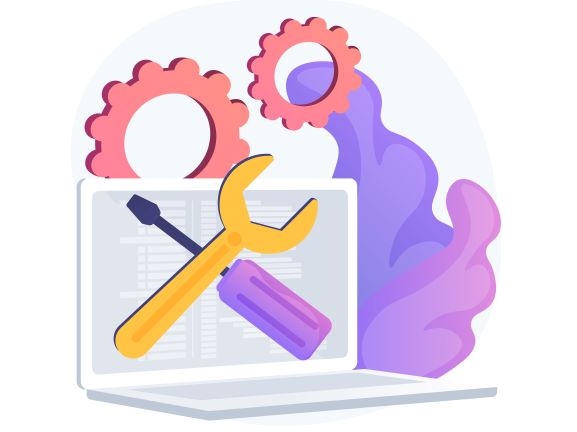Automation Testing moves at the speed of light, as the technological trend and applications are influenced by the ever-evolving change of the information technology market.
From the starting point of writing and executing the test scripts with bare support from technical tools, automation testing team now leans towards the utility of automation testing tools with various choices in terms of pricing plans, programming skills and other technical aspects.
After years of development and enhancement, the current pool of automation testing tools is now considered the pathway to success in the journey of transforming from manual to automation.
3 Types of Automation Tools
Automation tools are the destination for businesses and firms to come to for the optimal solution.
You must have been familiar with How to do automation testing. But do you really know the nature of them, such as their categories, price range, etc.? With this pace of development within the market, automation tools can be divided into 3 categories as follow:
Open-Source Tools
Open-source tools are the most common type for many firms and businesses to implement their automation testing process.
With these tools, the source code for testing execution has deliberate access. Plus, the source code can be utilized in both ways, either with full adoption or partly modification, depending on your needs.
For general utility, open-source tools allow quick access and viability for customization of an advanced test case. Hence, the use of an open-source tool requires SDETs (Software Development Engineering Testers) to have a programming background to deliberately customize the source code according to the specification of the project.
Note: Open-source tools for automation are free. In contrast, the cost of training and hiring adequate automation testing engineers is much higher than that of manual testing.
Commercial Automation Tools
Commercial automation tools, or vendor-source tools – are one other option for automation tools. With purchase through a monthly or annual subscription, you get access to premium features of these tools
One fine example of these features is the customer-centric service. If you encounter any problem during your time with the tool, full support 24/7 with a dedicated team will be at your service.
Custom Frameworks
No doubt open-source and vendor-source automation tools are the most popular ones, with a percentage of the utility of more than 80% of the market. Nevertheless, they are not always the answer, especially for niche projects.
|
The differences and incompatibility in the testing processes, testing environments, test methodology require the testing team for a custom framework to be developed in accordance with their project’s features.
|
As compared with the open and vendor-source tools, custom frameworks are far more complicated and burdensome to develop. For most of the time, custom frameworks are the last resort for the testing team and technical experts only if the other types of tools are incompatible with the project.
How to Choose the Best-Fit Automation Tool?
Despite being spoilt for ubiquitous choices of automation tools, businesses can follow these 5 following steps to come up with the strategic tools best fit for your firm.
1. Acquire a profound understanding of project requirement
A thorough understanding of the project requirements acts as the foundation for any further development of that project, including the automation testing process.
With the undeniable improvement and enhancement of automation testing, the scope and scale of the tests and projects require minute details to alleviate the test results and proficiency throughout the operation of the testing team.
The checklist of what to be clarified includes:
- Kinds of application (web app, mobile app or desktop app)
- Scope of the project (number of test cases, test scripts, etc.)
- Skill competence of the testing team
Having sorted out the checklists of project specification, businesses can indicate a strategic business analysis to put into an official project requirement. Only with the clarification of every single detail can the chosen tool integrate seamlessly with the project/application.
2. Devise budget and pricing plans
For any business, the ultimate target is to gain as much revenue as possible. In other words, a positive ROI for your business, in the long run, is the utmost important goal.
Fascinating as it is, not every firm is willingly ready to invest such a big amount of capital with no ROI in the near future.
|
To successfully pull this off, the first thing you need to do is devise a budget and plan for your capital. Depending on the budget, it will be easier for you to pick the appropriate software and the suitable automation tool.
|
With the detailed plan of the expenses and infrastructure for an automation testing lab, product owner or higher-level executive can have a grasp of how the whole testing process will operate with the given revenue. Hence, the decision on what tool to be implemented will be more cost-effective and proficient.
3. Determine the available skills of SDET and the programming languages
The inroads of automation testing take huge effort and knowledge of programming languages and other technical skills.
Most of the automation testing tools necessitate popular programming languages, including Java, Python, etc. The application of these programming languages is a must, but to proficiently and competently implement them in the automation testing environment is another story.

Skill sets of Automation Testers
For usable and sustainable test scripts, automation testers are obligated to write code that conforms to the designated quality standards of the project. Along with this, it is also quite important to deliver test scripts that are both efficient and comprehensible, even for newbie testers.
This could help in automation training and maintenance for later.
4. Clarify supported platform cross-browser compatibility
Supported platforms of the project are to be clarified as for each different platform, there are different tools to optimize the testing process.
For example, Selenium is an open-source framework to perform web testing; Kobiton specializes in Mobile and IoT Continuous Testing; Ranorex is for desktop applications.
Regarding cross-browser compatibility, testers have to consider these features:
- Different browser-OS combinations, devices, and assistive tools
- Shortlist of the most important browser-device combinations. This can be concluded from the target market, business indicators and other additional values.
- The behavioral analysis of your target customers to come up with the most common combinations of browsers and devices.
5. Clarify other technical aspects
Distinct from manual testing, automation testing process demands for high skills in the use of programming languages, not to mention other aspects in the course of technology.
With automation testing tools, the project leaders have to dig through the functions and performance of those available to come up with the most suitable lists of tools for your project.

Technical aspects of Automation Testing
The services provided within the market of automation testing tools have diverse choices for clients. You can experience one’s core features in trial and then decide whether it’s worth your investment.
Check out: Top 10 Trusted Automation Testing Tools for Your Business
The technical aspects of any automation tools include:
- Script maintenance and reusability: As a key factor on how the cost of one automation testing project can escalate, testing scripts maintenance requires vast consideration for any possibilities of utility in the future.
By putting a direct effect on the reusability of the test scripts, the automation testing team can save a lot of time when facing similar test cases.
A significant factor that escalates the total cost for test automation is script maintenance. Pre-written scripts in automation testing are fragile by nature. The ideal automation tool should come with capabilities to reduce such effort, such as eliminating object locator flakiness. On the other hand, script reusability saves you and the team a great deal of time for similar test cases as you can reuse test scripts.
- Technical support from tool provider: Professional technical support is offered within commercial tools. Normally, you can get help from tool providers via channels like direct chat or email. As in open-source tools, the support often comes from an active community with thousands of users.
- CI/CD integration capabilities: Tools with capability to integrate into the CI/CD pipelines ensure the testing continuity, making the whole process robust, dynamic and comprehensive.
- Report record and format: With automation testing tools, the record of test results and further documentation is secured in digital format, which is stored for future reference and training.
- Keyword & Data-Driven Testing: The robust utility of Keyword & Data-Driven Testing assists test team in the extension and expansion of the test scope. In the long run, this is a strategic feature for higher ROI.
- The applied application under test: The application under test should have a schedule of releases for the most proficient preparation. What features to be updated and new points should be noted to clarify the procedure of automation testing.
No matter what your scale and what aspects to be tested in your product, you have to follow through the 5 steps above to catch the essence and the core of your automation testing process. You can either figure this out with your BA and developer team or you can come to experts in the field for a thorough analysis of what tool to be implemented.
If you want to hear from our professional staff of the Testing Industry, don’t hesitate to Contact us for detailed consultation.
- Website: https://www.lotus-qa.com/
- Tel: (+84) 24-6660-7474
- Fanpage: https://www.facebook.com/LotusQualityAssurance

